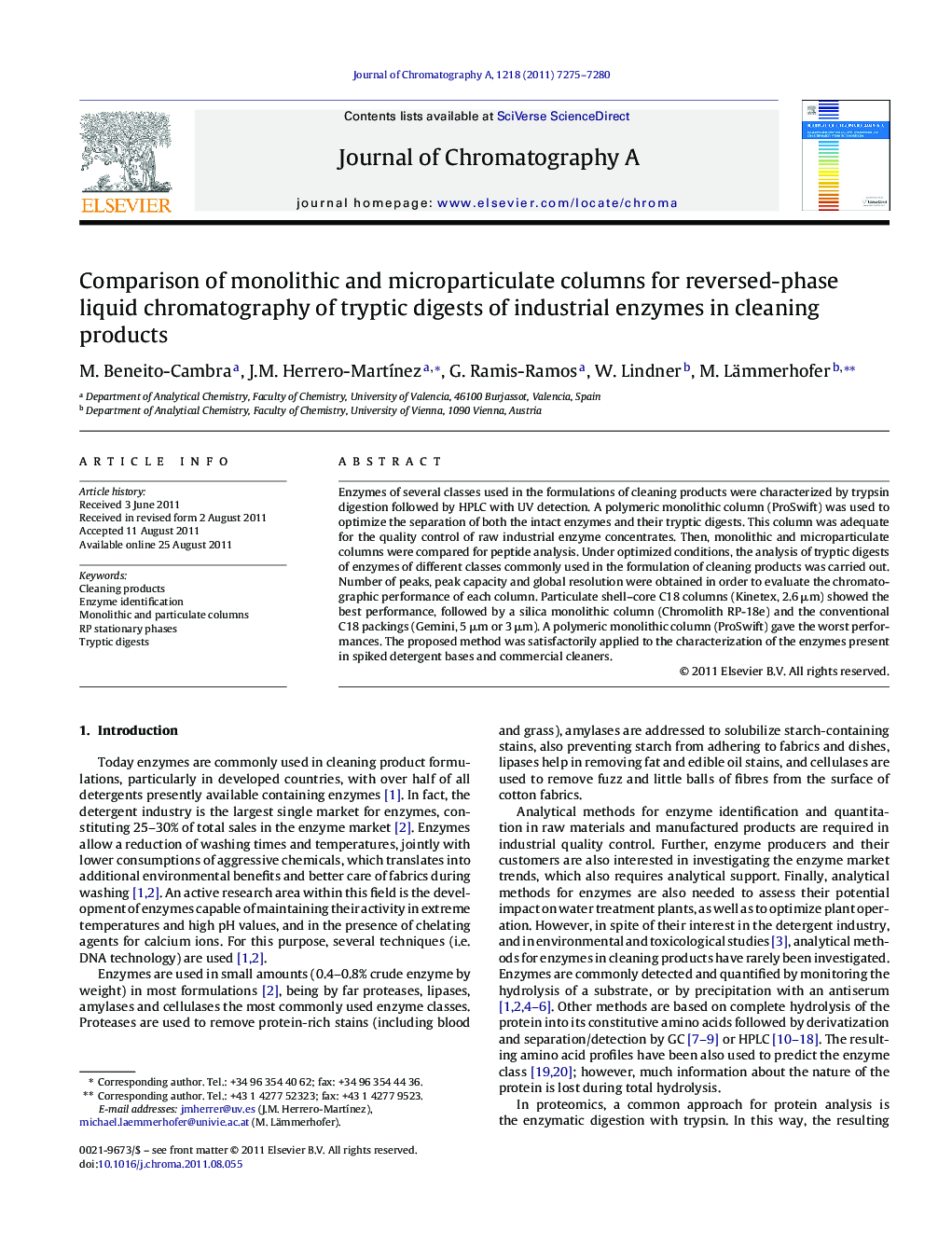| Article ID | Journal | Published Year | Pages | File Type |
|---|---|---|---|---|
| 1202265 | Journal of Chromatography A | 2011 | 6 Pages |
Enzymes of several classes used in the formulations of cleaning products were characterized by trypsin digestion followed by HPLC with UV detection. A polymeric monolithic column (ProSwift) was used to optimize the separation of both the intact enzymes and their tryptic digests. This column was adequate for the quality control of raw industrial enzyme concentrates. Then, monolithic and microparticulate columns were compared for peptide analysis. Under optimized conditions, the analysis of tryptic digests of enzymes of different classes commonly used in the formulation of cleaning products was carried out. Number of peaks, peak capacity and global resolution were obtained in order to evaluate the chromatographic performance of each column. Particulate shell–core C18 columns (Kinetex, 2.6 μm) showed the best performance, followed by a silica monolithic column (Chromolith RP-18e) and the conventional C18 packings (Gemini, 5 μm or 3 μm). A polymeric monolithic column (ProSwift) gave the worst performances. The proposed method was satisfactorily applied to the characterization of the enzymes present in spiked detergent bases and commercial cleaners.
